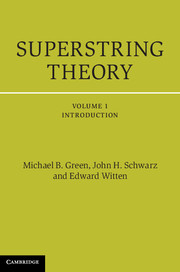2 - Free bosonic strings
Published online by Cambridge University Press: 05 September 2012
Summary
In string theory, just as in other theories, it is necessary to understand the free theory well before trying to describe interactions. Our first task in a systematic exposition of string theory is to understand thoroughly the propagation of a single free string in space-time at both the classical and quantum levels. We begin in this chapter with a study of bosonic strings. In the course of this discussion, we will approach the bosonic string from many different points of view, corresponding to many different formalisms that have been developed over the years. These include various approaches to covariant and to light-cone quantization. Each adds important ingredients to an overall understanding of string theory, so it really is useful to become familiar with all of them.
The Classical Bosonic String
It may be helpful, as in the introduction, to begin with a discussion of point particles. Thus, let us consider the motion of a point particle of mass m in a background gravitational field, i.e., in a curved Riemannian geometry described by a metric tensor gμν(x). The metric is assumed to have D − 1 positive eigenvalues and one negative eigenvalue corresponding to the Minkowski signature of D-dimensional space-time. We always use units in which ℏ = c = 1.
The action principle that describes the motion of a massive point particle is well-known, and already entered in the introduction.
- Type
- Chapter
- Information
- Superstring Theory25th Anniversary Edition, pp. 57 - 120Publisher: Cambridge University PressPrint publication year: 2012



